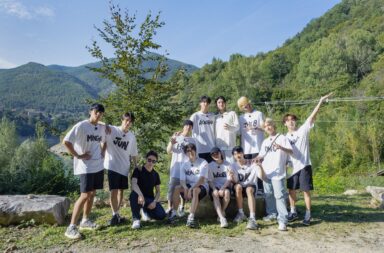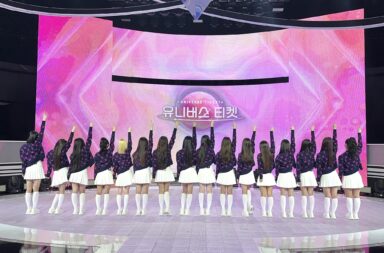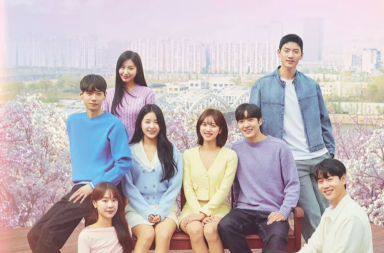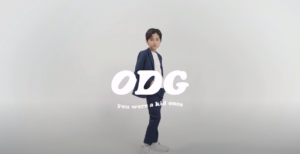
If someone asks you, “What is death?”, what would you answer?
ODG, a clothing brand in Korea, asks this—along with many other thought-provoking questions—to children as young as six years old in their YouTube channel. Their videos follow a social experiment approach in a form of interviews, wherein the children are asked to speak on mature topics or converse with adults and children different from them. It’s a unique marketing strategy that could make you forget that they’re advertising the clothes in the first place.
With over 2.6 million subscribers and videos reaching over 10 million views, what makes ODG worth the watch? There are other YouTube channels, such as Max LV. Kids, Studio Kizzle, and Korean Studio, which also feature Korean children in social experiments and/or interviews with K-pop artists, but what makes ODG stand out?
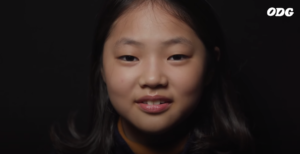
Filming young children can be an exhausting process. They require a lot of preparation to make them feel comfortable in an unfamiliar environment, most especially facing a camera. The kids of ODG seem to have a comfortable grasp of being in front of the camera at the same time being awkwardly cute. (ODG’s 12-year-old Kim Min-seo is the only identified cast with acting experience.)
This parallel comparison of comfort can be seen in the videos wherein children engage in a Q&A format with the producer. For example, in ODG’s “Do Kids Nowadays Believe in Santa?”, kids ranging from six to 13 were asked if they knew Santa and if they believe he exists. Their responses were natural and engaging while stating truthfully what they think. In contrast with Korean Studio’s “The language that Korean children think prettiest,” there’s a sense of discomfort from the children with the wavering eye contact, short answers, and tense body language.
Age could be a factor in determining how well enough they can carry a conversation, but sometimes, that’s not entirely the case. In ODG, Studio Kizzle, and Korean Studio, the ages of the children range from five to middle school teenagers. Despite similarities in age, the children respond differently across the different channels. Max LV. Kids is an exception as the majority of their talents are only around six years old. The age limit might be due to the kind of content they produce, as the channel allures viewers with the children’s cuteness rather than their response to provocative questions.
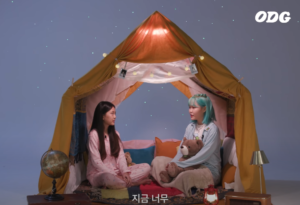
Oftentimes as children, we were told that we will only understand certain topics once we became adults. Discussions on feelings of insecurity, and sadness are dismissed and topics such as death are considered taboo. This where ODG hits the nail on the head. The thoughts and feelings of young children are surprisingly deep and profound.
In “Why Did You Cry Back Then? If A 10 yr Old Me Calls My Mom,” ODG cast member Oh Chae-ah acted as a messenger to 27-year-old Jang Soo-young, who wanted to know what her mother was going through that time when she was 10 years old. It was a tearful and heartwarming conversation that revealed how parents put on a brave front amidst their problems and how children wish to understand and provide them comfort. Another interesting interview was how kids tried to distinguish between good and evil. This can be considered philosophical discussion among adults as one’s moral compass could differ from one another but for the children, the answer is clear—we simply can’t typecast ourselves as good or bad.
Studio Kizzle, on the other hand, showcases the thoughts, feelings, and behavior in actual social experiments. How would children react when a student with an injured arm trips and falls? What would children do when they came across a stranger crying in the middle of the street? Their responses would surprise you (in a good way). They are wise beyond their years and they go out of their way to help a stranger. The channel aims to show different perspectives of society, including its dark reality, such as the danger of child abduction.
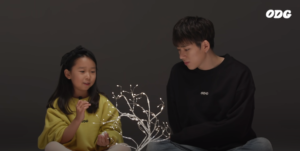
These social experiment channels share some similarities. Some channels feature children conversing with celebrities about loneliness and anxiety, which are often not being brought up especially among idols. Another similar content is having the children meet people different from them for the first time. What sets ODG apart, however, is its unique and charming treatment of common themes.
What happens when a Korean kid meets an American kid for the first time? The result is a four-minute awkwardly cute video, which astoundingly attracted 62 million views. The video did not have any celebrity guests, yet people were charmed at how two very different children found ways how they want to interact.
In a way, ODG customizes its format according to its guests. For example, “ODG Noraebang” features legendary artists, such as Gummy, Shin Young-jae (4Men), and Kim Bum-soo, singing their most beloved songs at karaoke. The catch here is that these famous singers act as passersby wanting to unwind at a karaoke room. Moreover, young people sing or hear their songs at karaoke but are not familiar with the singer. It’s endearing to watch the students express their amazement at the same time appreciate the lyrics.
Another format is “Career Review”, which so far, featured Shinee and Super Junior. Both groups debuted at a time when the children weren’t born yet, hence, their unfamiliarity despite their immense popularity. It was a trip down memory lane of both groups’ notable achievements, especially when K-pop was becoming a global movement.
Combining terrific casting, simple content, and direct format, ODG has built itself an image that conveys relatable stories through its clothing. They did an amazing job of casting smart and adorable children who are also polite and mature. The format and content are simple with no unnecessary edits or animations. In some of the children’s videos, they share that they are only briefed on what will happen during the shoot but they aren’t told who the guests will be. As adults, our thoughts and feelings don’t differ from that of young children. As their slogan goes, “You were a kid once.”
